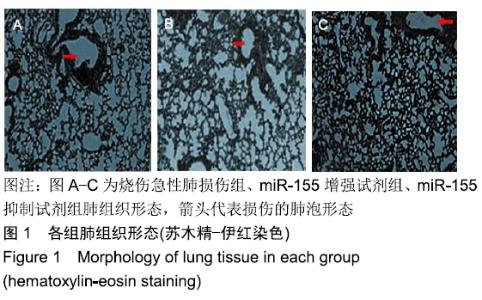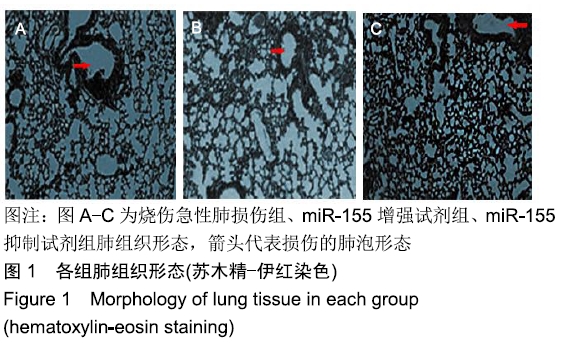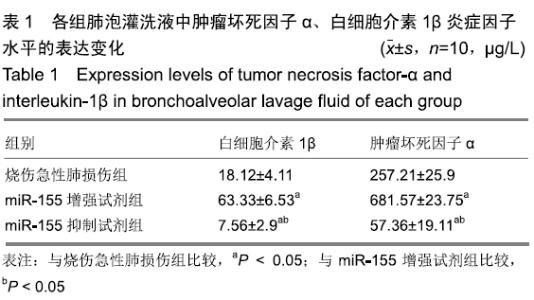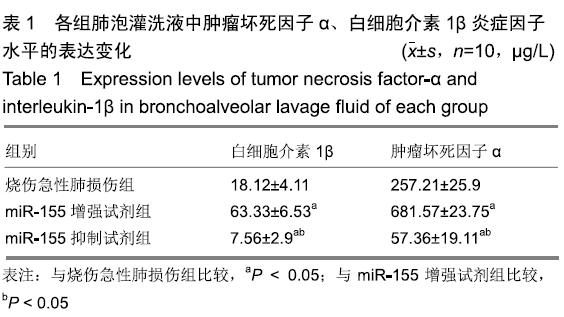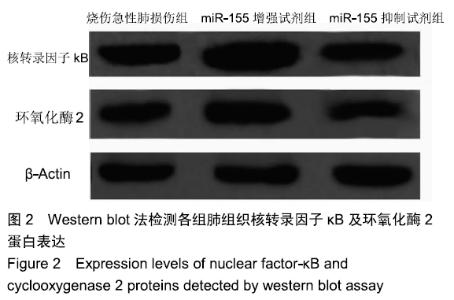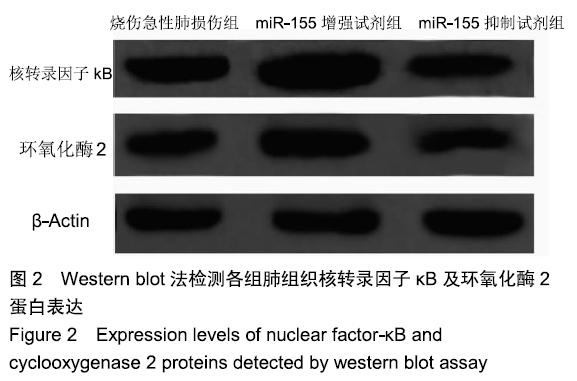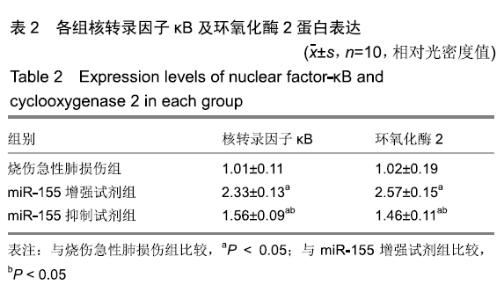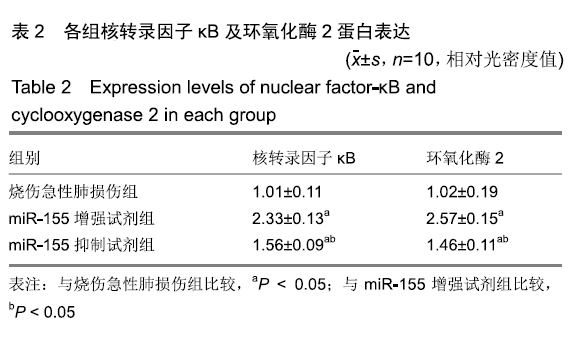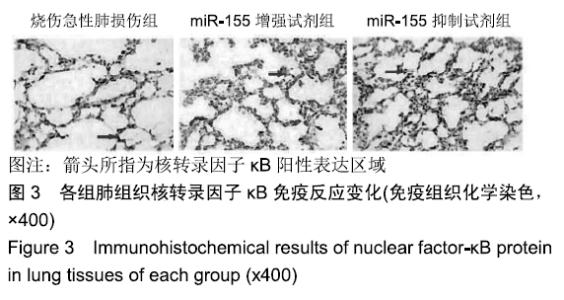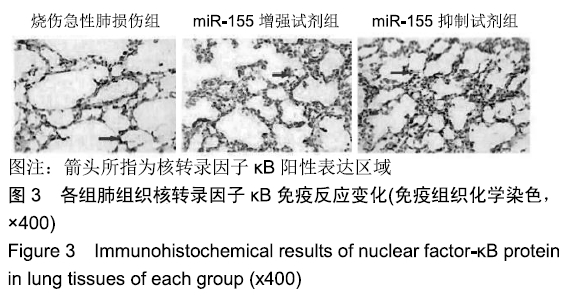[1] LIU S, YUE Y, PAN P, et al. IRF-1 Intervention in the classical ROS-dependent release of NETs during LPS-induced acute lung injury in mice. Inflammation.2019;42(1):387-403.
[2] LU Y, JIANG Y, LING L. Beneficial effects of Houttuynia cordata polysaccharides on "two-hit" acute lung injury and endotoxic fever in rats associated with anti-complementary activities. Acta Pharm Sin B. 2018;8(2):218-227.
[3] LIU JJ, HU S, DONG N. Preliminary study on the changes of human leukocyte D-min antigen on the surface of peripheral blood monocytes of severely burned patients. China Critical Care Emergency Medical Officer. 2013;25(1):23-25.
[4] YOU HY, ZHAN JH, YAN Q. Observation and clinical significance of T-lymphocyte function in patients with severe burns. Pract Slight Bed Med.2005;6(8):10-14.
[5] COZIER GE, ACHARYA KR. How a DNA mimic catches and cleaves NF-κB. J Biol Chem.2018;293(39):15330-15331.
[6] YE Z, LIU X, YANG Y. The differential expression of novel circular RNAs in an acute lung injury rat model caused by smoke inhalation.J Physiol Biochem. 2018;74(1):25-33.
[7] DERASKA PV, O'LEARY C, REAVIS HD, et al. NF-κB inhibition by dimethylaminoparthenolide radiosensitizes non-small-cell lung carcinoma by blocking DNA double-strand break repair. Cell Death Discovery. 2018;4(1):10.
[8] SI Y, ZHANG Y, ZHAO J, et al. Niacin inhibits vascular inflammation via downregulating nuclear transcription Factor-κB signaling pathway. Mediators Inflamm. 2014;2014(2):263786.
[9] VALLABHAPURAPU S, KARIN M. Regulation and function of NF-kappaB transcription factors in the immune system. Ann Rev Immunol.2009;27(1):693-733.
[10] YANG D, SUN C, ZHANG J. Proliferation of vascular smooth muscle cells under inflammation is regulated by NF-κB p65/microRNA-17/RB pathway activation. Int J Mol Med. 2018;41(1):43-50.
[11] GU X, ZHANG Q, DU Q, et al. Pinocembrin attenuates allergic airway inflammation via inhibition of NF-κB pathway in mice. Int Immunopharmacol.2017;13(4):492-504.
[12] EL-KHOLY AA, ELKABLAWY MA, EL-AGAMY DS. Lutein mitigates cyclophosphamide induced lung and liver injury via NF-κB/MAPK dependent mechanism. Biomed Pharmacother. 2017;92(5):519-527.
[13] ZHANG A, PAN W, LV J. Protective effect of amygdalin on LPS-induced acute lung injury by inhibiting NF-κB and NLRP3 signaling pathways. Inflammation. 2017;40(3):745-751.
[14] YANG Z, ZHANG X R, ZHAO Q. Knockdown of TNF-α alleviates acute lung injury in rats with intestinal ischemia and reperfusion injury by upregulating IL-10 expression. Int J Mol Med. 2018;42(2):926-934.
[15] 舒彬,刘真,贾赤宇.急性肺损伤/急性呼吸窘迫综合征与NF-κB信号转导关系的研究进展[J].中华损伤与修复杂志(电子版),2016, 11(2):147-150.
[16] 张艰,李圣青,李焕章,等.NF-κB在大鼠急性肺损伤模型肺组织中的表达及N-乙酰半胱氨酸的影响[J].细胞与分子免疫学杂志, 2004,20(6):712-715.
[17] 王建春,姜鹏,谢艳萍,等.急性肺损伤大鼠肺组织NF-κB表达的研究[J].中国现代医学杂志,2006,16(16):2448-2452.
[18] 黄继义,刘才文,林建东,等.内毒素急性肺损伤TLR4-LPS信号传导对NF-κB活性的影响[J].临床肺科杂志,2014,19(2):223-226.
[19] 蒋京京,石学银,袁红斌,等.乌司他丁对急性肺损伤大鼠肺组织NF-κB表达的影响[J].解放军医学杂志,2009,34(5):550-553.
[20] 肖雪飞,杨明施,孙圣华.姜黄素对脓毒症急性肺损伤的炎症反应及NF-κB信号通路的影响[J].中国现代医学杂志,2013,23(30):19-22.
[21] 唐瑾,谢旺,程婷婷,等.miR-155反义寡核苷酸对内毒素诱导急性肺损伤小鼠的保护作用[J].中华危重病急救医学,2018,30(8): 743-747.
[22] 尹文,杨剑虹,虎晓岷,等.急性肺损伤肺泡巨噬细胞NF-κB激活通路的实验研究[J].中国急救医学,2003,23(5):281-283.
[23] 崔雯雯,金鑫,张彦芬,等.连花清瘟胶囊对脂多糖致急性肺损伤小鼠IKK/IκB/NF-κB信号通路的影响[J].中成药, 2015,37(5):953-958.
[24] 詹丽英,李文澜,柯伟,等.内毒素急性肺损伤中p38MAPK、NF-κB与HO-1的关系[J].中国病理生理杂志,2010,26(9):1790-1795.
[25] 马丞,阿赛古丽.微小RNA(miR)-155对脂多糖所致小鼠急性肺损伤的干预作用[J].中国老年学杂志,2016,36(9):2063-2064.
[26] 李文婷,舒彬,刘真,等.微小RNA-155对脂多糖所致小鼠急性肺损伤的干预作用[J].中华医学杂志,2015,95(28):2312-2316.
[27] 曾钧发,肖宏,桂培根,等.长托宁对急性肺损伤家兔肺组织NF-κB活性的影响[J].中南医学科学杂志,2012,40(1):55-58.
[28] 刘温娟,黄爱霞,鲁立文.miR-326在LPS诱导的急性肺损伤大鼠模型中的作用 及对NF-κB信号通路的影响[J].河北医学,2019, 25(3):529-532.
[29] 王凯,潘俊辉,王鹏.清肺理痰方对急性肺损伤大鼠肺组织NF-κB和Toll样受体4表达的影响[J].中国中医急症,2016,25(6): 1001-1004.
[30] 李雪萍,齐晓林,叶长青,等.乌司他丁干预水下爆炸致兔急性肺损伤NF-κB、MMP-9的表达变化[J].中国实验诊断学,2017,21(11): 2000-2002.
|
